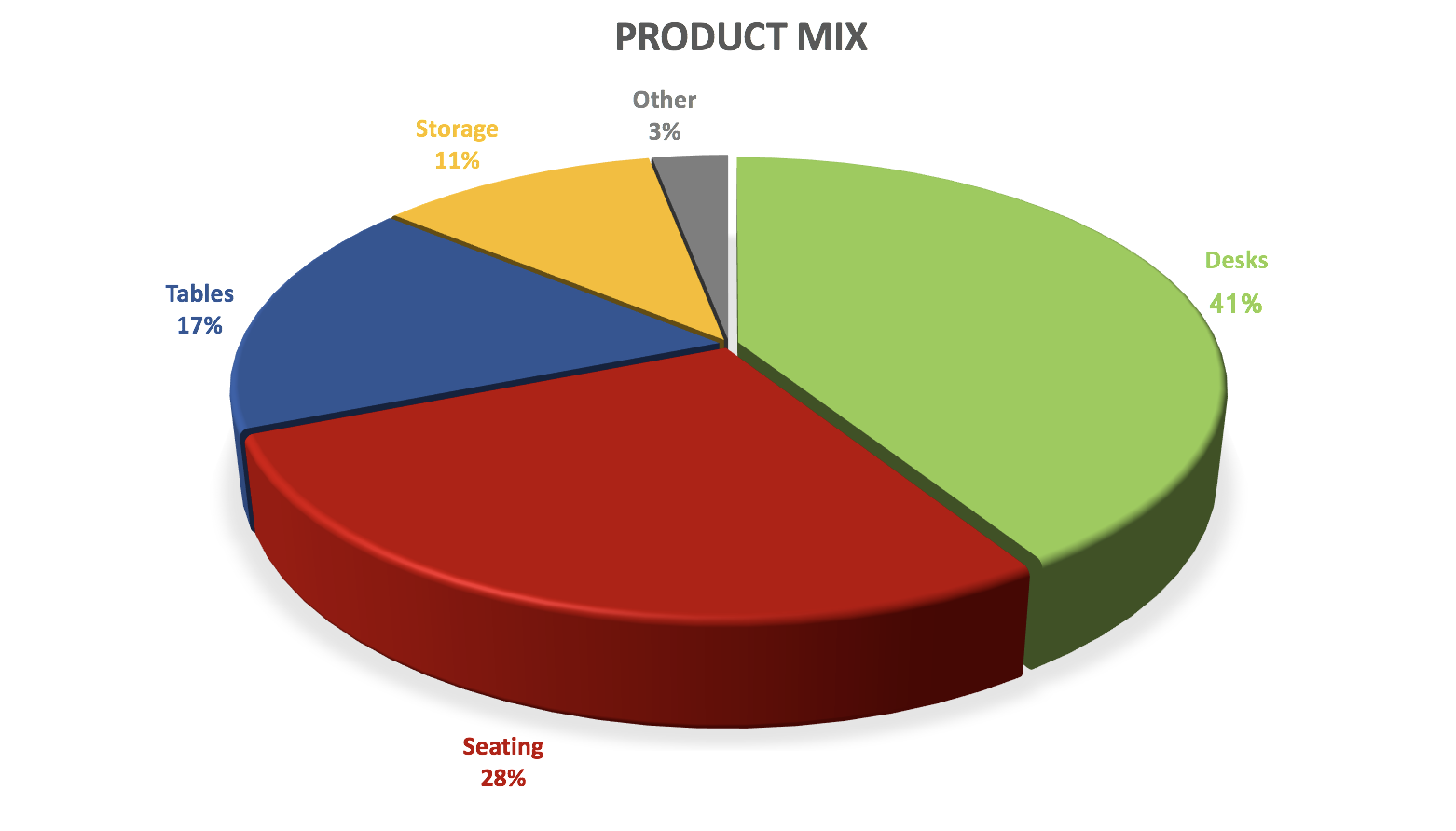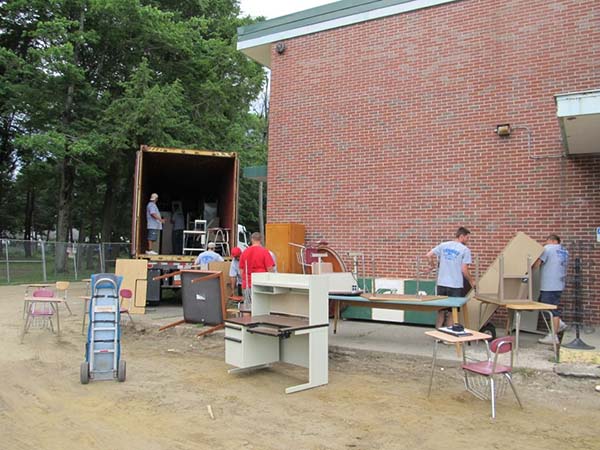Greenfield High School, MA
SITUATION
Completing construction of a new high school, Greenfield (Mass.) needed to dispose of some 1,500 furnishings that were not suitable to be reused.
MATERIAL COMPOSITION & QUALITY
Cross section of everything needed to outfit a school: student and teacher desks, tables (computer, work, art, shop), seating, file cabinets, bookcases, etc. Almost all in good condition or better.
SETTING
Rural community. Access impeded by construction, site work and perimeter fencing for the new school.
OVERVIEW
Greenfield (Mass.) was in the final stages of building a new high school, scheduled to open in August 2014. When the school year ended in June, Greenfield High staff filled the school gym with furniture to be moved into the new building; other furnishings were offered to the local community. But after that, there remained over 1,500 items to be disposed of.
The surplus included nearly everything needed to set up a school: student and teacher desks and chairs, file cabinets and bookcases, work tables, shop tables, art tables, lab benches, library furnishings. It was used, but still functional with years of life remaining.
Greenfield’s Project Manager, Construction Monitoring Services (CMS), introduced the idea of reuse. CMS connected with IRN in 2012, and has subsequently completed several projects that have recovered thousands of furnishings for reuse. When CMS Project Manager Neil Joyce suggested reuse, Greenfield High Principal Donna Woodcock jumped at the chance.
“It was painful to think of good furniture going into a landfill,” says Woodcock. “Concern for the environment is an important theme at Greenfield High School, and throwing away usable furniture sends a wrong message.”
IMPLEMENTATION
The project was implemented in two phases. In late June, IRN brought in five tractor trailers over three days to take away the bulk of the old furnishings. IRN’s moving crew systematically emptied the building, and loaded out from four different doorways to minimize carry distances. To avoid “detention” charges for keeping trailers waiting onsite, IRN had the crew stage furnishings close to a doorway in the afternoon, then load trailers as quickly as possible the following morning, and then stage more furnishings again in the afternoon.
Administrative staff continued to work in the old facility through the summer. In late August these staff moved into the new building, and IRN returned to load two more containers with their old furnishings, and several dozen additional items that had been flagged for reuse over the summer.
INVENTORY
Total of 1,130 pieces shipped:
Desks (468 pieces) – student desks, computer desks, and professional desks.
Seating (196 pieces) – student chairs, side chairs, stacking chairs, task chairs, and stools.
Tables (312 pieces) – work tables, art tables, shop tables and other tables.
Storage (122 pieces) – bookcases, storage cabinets, and file cabinets.
Other (32 pieces)

COST
The District could not spend extra money on reuse. CMS Project Manager Neil Joyce demonstrated that reuse is more cost-effective than throwing the surplus furniture away. “There’s no difference in labor, and we pack as much into one trailer as we would into three or four big dumpsters,” explained Joyce. “There’s a cost for the trailer, but compared to dumpsters we pay a lot less.”
DESTINATION
The furnishings were accepted by IRN’s charitable partner World Vision, which matched them with school development projects in Zambia, in southern Africa. The filled shipping containers were transported over the road to the port of New York, where they were loaded onto a container ship. The ship carried them 8,200 miles through the Mediterranean and the Suez Canal, to be unloaded in Dar es Salaam, Tanzania. From there the containers were re-loaded onto chassis, and trucked the nearly 2,000 final miles to Lusaka, the capital of Zambia.

“This was a four-win solution. Our community and taxpayers win, we send the right message to our students, the environment wins, and children far, far away get the biggest benefit of all. It’s not often that a single project can do so much good.”
Donna Woodcock
